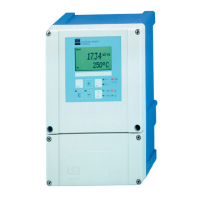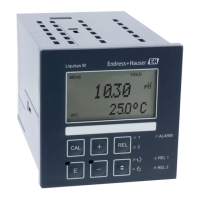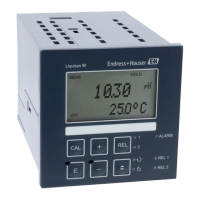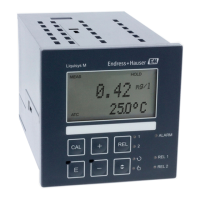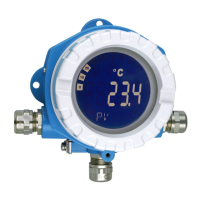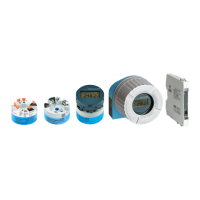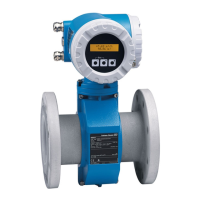Liquisys M CLM223/253 Commissioning
Endress+Hauser 63
6.4.9 Concentration measurement
You need the Plus Package to use the function group "CONCENTRATION".
The transmitter can convert conductivity values to concentration values. For this, set the
operating mode to Concentration measurement (see field A1).
Then, you must enter the basic data to which the concentration calculation should refer.
You require the conductivity characteristics of the medium. To get the characteristics, you
can either refer to the data sheets of the medium or determine the characteristics yourself.
1. To do so, create samples of the medium with the concentrations occurring in your
process.
2. Measure the uncompensated conductivity of these samples at temperatures which
likewise occur in your process.
– For variable process temperature:
If the variable process temperature should be taken into account for concentration
measurement, you must measure the conductivity of each created sample at two
different temperatures at least (ideally at the lowest and highest process
temperature). The temperature values for the various samples must be identical.
However, the difference between the temperatures must be at least 0.5 °C.
At least two differently concentrated samples measured at two different
temperatures are required because the transmitter needs a minimum of four
references.
– For constant process temperature:
Measure the differently concentrated samples at this constant process temperature.
A minimum of two samples is necessary.
Finally, you should have measuring data which are similar to those shown in the following
figures:
a0008926
Fig. 35: Measured data for variable process temperatures (example)
C
T
Conductivity
Concentration
Temperature
1
2
Measuring point
Measuring range
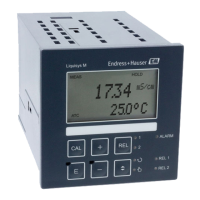
